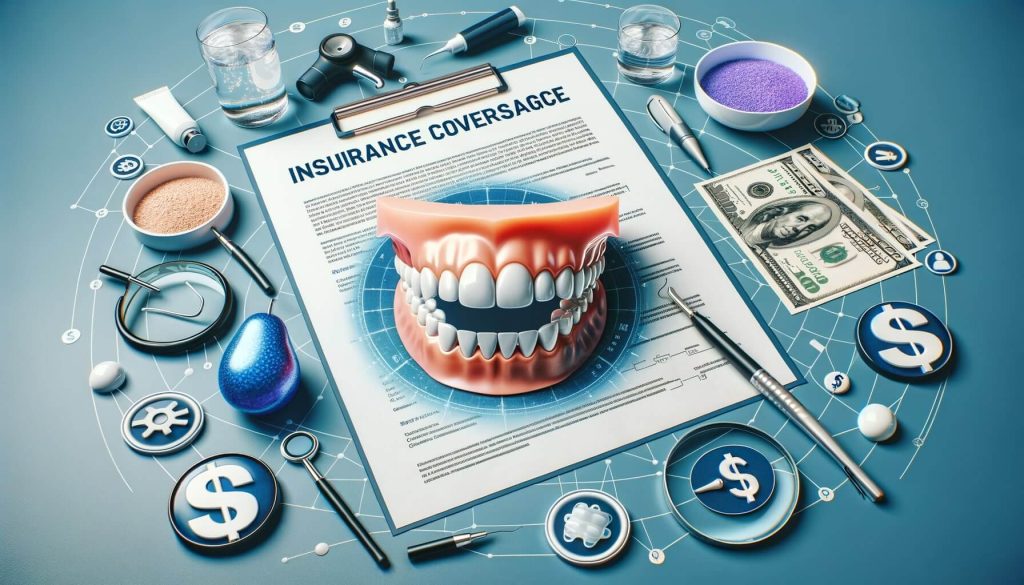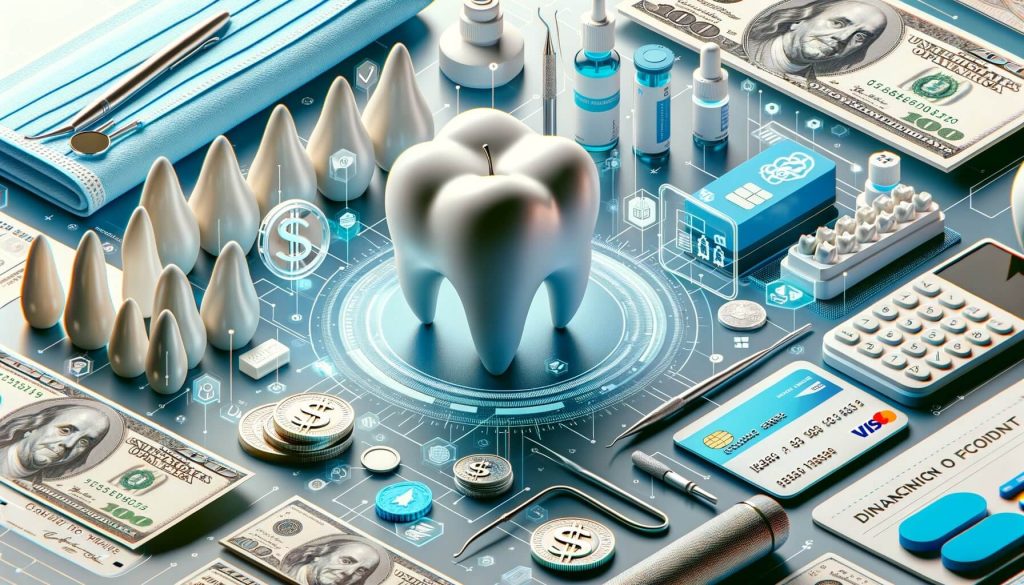Cosmetic dentistry has become increasingly popular in recent years, as more and more people seek to improve their smiles and boost their self-confidence. However, one major concern for many patients is the cost of these procedures. Fortunately, there are a variety of patient payment options available to help make cosmetic dentistry more affordable.
In this comprehensive guide, we will explore the different payment options for cosmetic dentistry, including insurance coverage, financing options, dental savings plans, flexible spending accounts, payment plans, third-party financing, and credit card payments. We will also provide tips for budgeting and saving for cosmetic dentistry procedures.
Understanding Insurance Coverage for Cosmetic Dentistry Procedures

When it comes to insurance coverage for cosmetic dentistry procedures, it’s important to note that most dental insurance plans do not cover purely cosmetic procedures. However, there are some exceptions. For example, if a cosmetic procedure also serves a functional purpose, such as a dental crown to repair a cracked tooth, it may be partially covered by insurance. Additionally, some insurance plans offer coverage for orthodontic treatments, such as braces or clear aligners, which can improve both the appearance and function of the teeth.
To determine if your insurance plan covers any cosmetic dentistry procedures, it’s best to contact your insurance provider directly. They can provide you with a list of covered procedures and any associated costs or limitations. It’s also important to note that even if a procedure is covered by insurance, there may still be out-of-pocket expenses, such as deductibles or co-pays.
Exploring Financing Options for Cosmetic Dentistry

For patients who do not have insurance coverage for cosmetic dentistry procedures or who have out-of-pocket expenses, financing options can be a viable solution. Many dental practices offer in-house financing plans, which allow patients to spread out the cost of their treatment over a period of time. These plans often have low or no interest rates, making them an affordable option for many patients.
Another financing option is to apply for a personal loan from a bank or credit union. These loans can be used to cover the cost of cosmetic dentistry procedures and are typically paid back in monthly installments. It’s important to shop around and compare interest rates and terms before choosing a lender.
Additionally, there are third-party financing companies that specialize in providing loans for medical and dental procedures. These companies often offer flexible repayment terms and competitive interest rates. Some popular third-party financing options for cosmetic dentistry include CareCredit, LendingClub, and Prosper Healthcare Lending.
The Role of Dental Savings Plans in Cosmetic Dentistry Payments

Dental savings plans, also known as dental discount plans, are an alternative to traditional dental insurance. These plans offer discounted rates on a wide range of dental procedures, including cosmetic dentistry. Patients pay an annual fee to join the plan and then receive discounted rates when they visit a participating dentist.
One of the advantages of dental savings plans is that there are no waiting periods or annual maximums, as is often the case with dental insurance. This means that patients can start using their plan immediately and can receive discounts on any necessary cosmetic dentistry procedures.
Utilizing Flexible Spending Accounts (FSAs) for Cosmetic Dentistry

Flexible Spending Accounts (FSAs) are a type of tax-advantaged savings account that allows employees to set aside pre-tax dollars to pay for eligible medical expenses. Cosmetic dentistry procedures are generally considered eligible expenses under FSA guidelines, as long as they are deemed medically necessary.
To utilize an FSA for cosmetic dentistry payments, patients must first enroll in their employer’s FSA program during the open enrollment period. They can then contribute a portion of their pre-tax salary to the account, up to the annual contribution limit set by the IRS. The funds in the FSA can be used to pay for cosmetic dentistry procedures, as well as other eligible medical expenses, such as prescription medications and doctor’s visits.
It’s important to note that FSA funds are “use it or lose it,” meaning that any funds not used by the end of the plan year are forfeited. However, some employers offer a grace period or a carryover option, allowing employees to use their FSA funds beyond the plan year. It’s important to check with your employer or FSA administrator to understand the specific rules and deadlines for your FSA.
Negotiating Payment Plans with Cosmetic Dentistry Providers
If you are unable to pay for your cosmetic dentistry procedure upfront or in full, it may be possible to negotiate a payment plan with your dental provider. Many dentists understand that the cost of cosmetic procedures can be a financial burden for some patients and are willing to work out a payment arrangement.
When negotiating a payment plan, it’s important to be upfront and honest about your financial situation. Explain your budget constraints and ask if the dental provider can offer a payment plan that fits within your means. Some dentists may be willing to set up a monthly payment plan or offer a discounted rate for paying in cash.
It’s important to get any payment plan agreement in writing and to fully understand the terms and conditions before proceeding. Make sure to ask about any interest or fees that may be associated with the payment plan, as these can add to the overall cost of the procedure.
Exploring Third-Party Financing Options for Cosmetic Dentistry
In addition to in-house financing plans offered by dental practices, there are also third-party financing options available for cosmetic dentistry procedures. These companies specialize in providing loans specifically for medical and dental treatments and often offer competitive interest rates and flexible repayment terms.
One popular third-party financing option is CareCredit. CareCredit offers a healthcare credit card that can be used to pay for a variety of medical and dental procedures, including cosmetic dentistry. The card offers promotional financing options, such as interest-free periods, for qualified applicants. CareCredit is accepted at over 225,000 healthcare providers nationwide, making it a convenient option for many patients.
LendingClub is another third-party financing company that offers loans for cosmetic dentistry procedures. LendingClub allows patients to apply for a loan online and receive a decision within minutes. The loans have fixed interest rates and can be paid back over a period of time that works for the patient’s budget.
Prosper Healthcare Lending is another popular option for financing cosmetic dentistry procedures. Prosper offers loans specifically for healthcare expenses, including dental treatments. The loans have competitive interest rates and flexible repayment terms, making them a popular choice for many patients.
The Pros and Cons of Using Credit Cards for Cosmetic Dentistry Payments
Using a credit card to pay for cosmetic dentistry procedures can be a convenient option for many patients. Credit cards offer the flexibility to pay for the procedure upfront and then make monthly payments over time. They also often come with rewards programs, such as cash back or travel points, which can be a bonus for patients who use their credit card for large purchases.
However, it’s important to consider the potential drawbacks of using a credit card for cosmetic dentistry payments. Credit cards typically have high interest rates, especially if the balance is not paid off in full each month. This can add to the overall cost of the procedure, especially if it takes several months or years to pay off the balance.
Additionally, using a credit card for a large purchase can increase your credit utilization ratio, which is the amount of credit you are using compared to your total available credit. A high credit utilization ratio can negatively impact your credit score, making it more difficult to obtain credit in the future.
Tips for Budgeting and Saving for Cosmetic Dentistry Procedures
Saving for a cosmetic dentistry procedure can seem like a daunting task, but with careful planning and budgeting, it can be achievable. Here are some tips to help you save for your desired cosmetic dentistry procedure:
1. Set a savings goal: Determine how much you need to save for your procedure and set a realistic savings goal. Break it down into smaller monthly or weekly savings targets to make it more manageable.
2. Create a budget: Take a close look at your income and expenses and create a budget that allows you to save for your procedure. Cut back on non-essential expenses and redirect that money towards your savings goal.
3. Automate your savings: Set up automatic transfers from your checking account to a separate savings account dedicated to your cosmetic dentistry procedure. This will make saving easier and ensure that you consistently contribute to your goal.
4. Look for ways to increase your income: Consider taking on a part-time job or freelancing to earn extra money that can be put towards your savings goal. You can also sell unused items or downsize your living arrangements to free up additional funds.
5. Research discounts and promotions: Keep an eye out for discounts or promotions offered by dental practices for cosmetic dentistry procedures. Some practices may offer special pricing during certain times of the year or for specific procedures.
6. Prioritize your savings: Make saving for your cosmetic dentistry procedure a priority. Cut back on unnecessary expenses and focus on saving as much as possible. Remember that the end result will be worth the sacrifice.
FAQs
Q: Does insurance cover cosmetic dentistry procedures?
Most dental insurance plans do not cover purely cosmetic procedures. However, some procedures that also serve a functional purpose may be partially covered.
Q: What financing options are available for cosmetic dentistry?
Financing options for cosmetic dentistry include in-house financing plans, personal loans from banks or credit unions, third-party financing companies, and dental savings plans.
Q: Can I use a flexible spending account (FSA) for cosmetic dentistry payments?
Yes, cosmetic dentistry procedures are generally considered eligible expenses under FSA guidelines, as long as they are deemed medically necessary.
Q: Can I negotiate a payment plan with my dental provider for cosmetic dentistry procedures?
Yes, many dental providers are willing to work out a payment plan with patients who are unable to pay upfront or in full.
Q: Are there third-party financing options specifically for cosmetic dentistry?
Yes, there are third-party financing companies that specialize in providing loans for medical and dental procedures, including cosmetic dentistry. Some popular options include CareCredit, LendingClub, and Prosper Healthcare Lending.
Conclusion
Cosmetic dentistry can be a life-changing investment, but the cost can be a barrier for many patients. Fortunately, there are a variety of patient payment options available to make these procedures more affordable. From insurance coverage and financing options to dental savings plans and flexible spending accounts, patients have a range of choices to fit their individual needs and budgets.
By exploring these options and utilizing budgeting and saving strategies, patients can achieve their dream smiles without breaking the bank. Remember to thoroughly research and compare the different payment options available to find the best fit for your specific situation. With careful planning and financial management, cosmetic dentistry can be within reach for anyone seeking to enhance their smile and boost their self-confidence.
